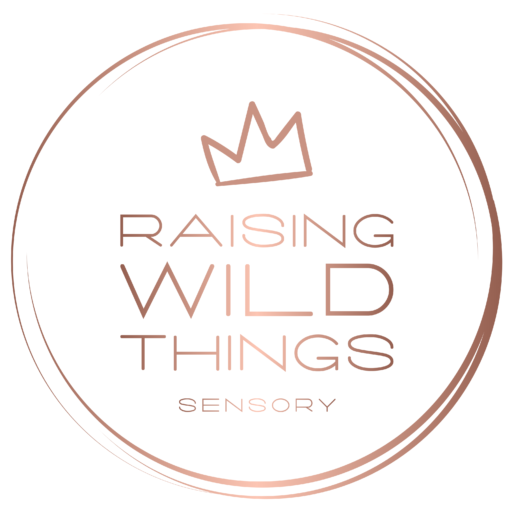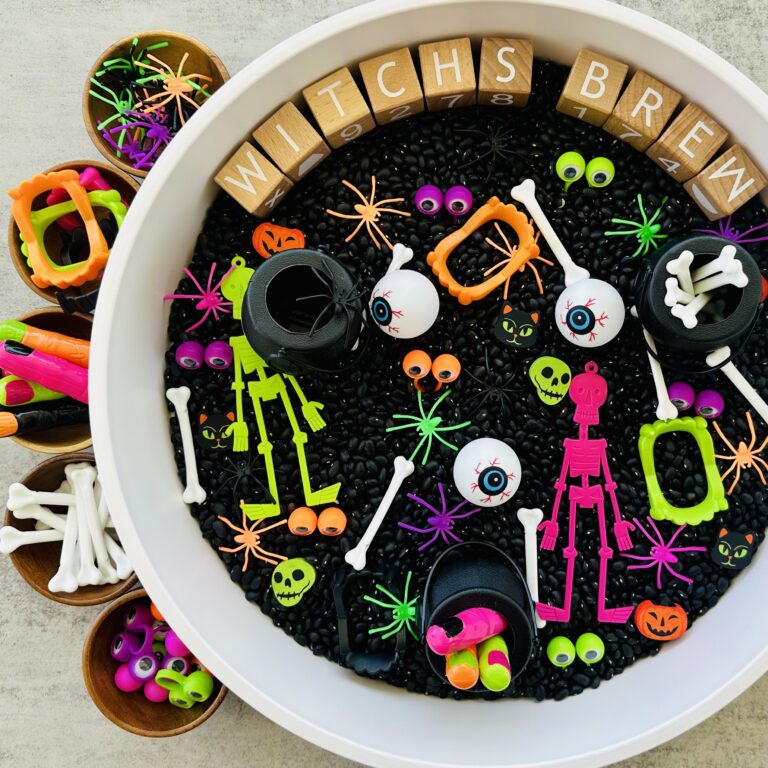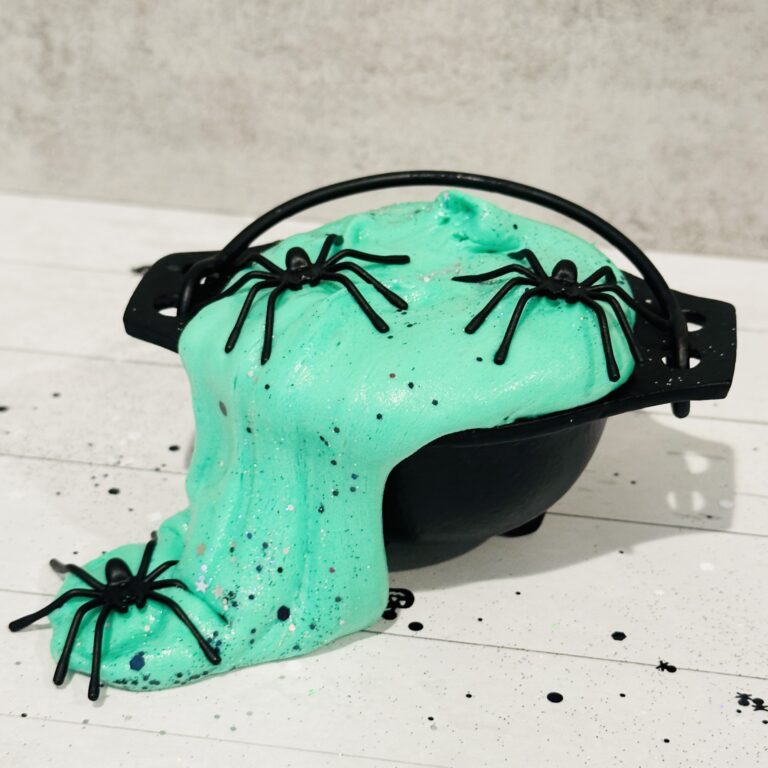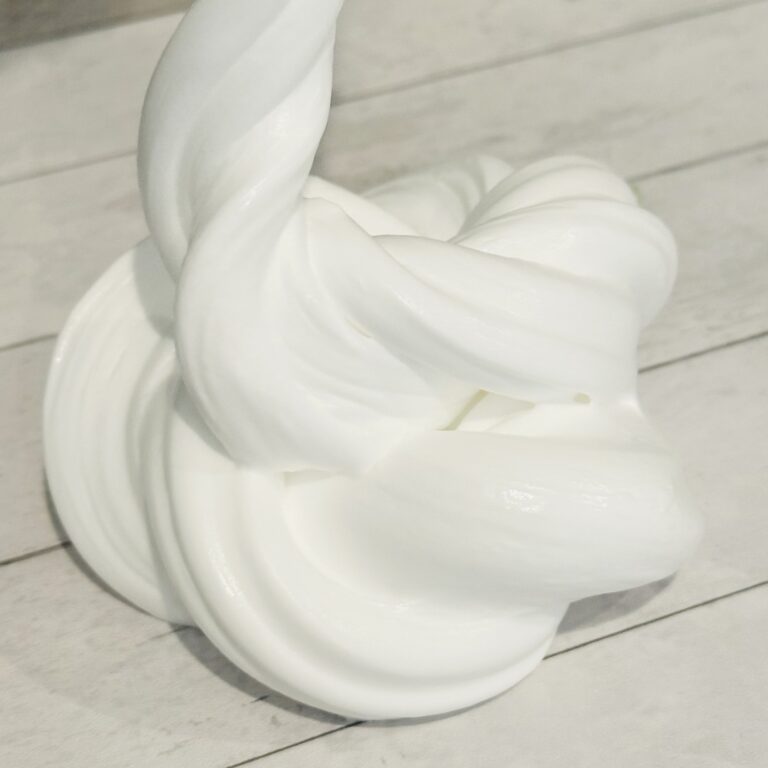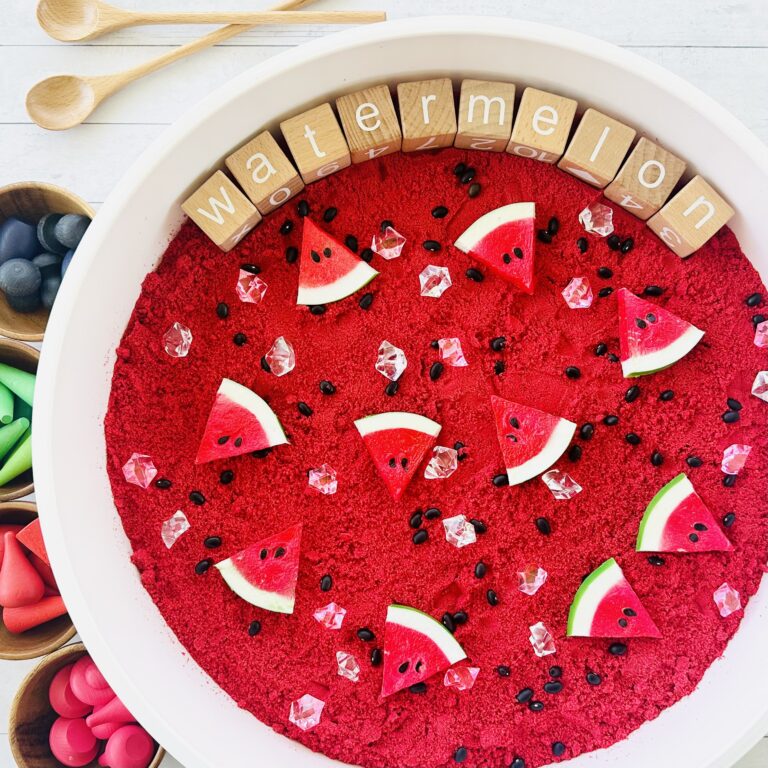How To Make Mystery Water For Sensory Play
Make mystery water with cornstarch, food coloring, and water! The perfect DIY sensory play idea for toddlers and preschoolers that encourages learning, creativity, and fun!
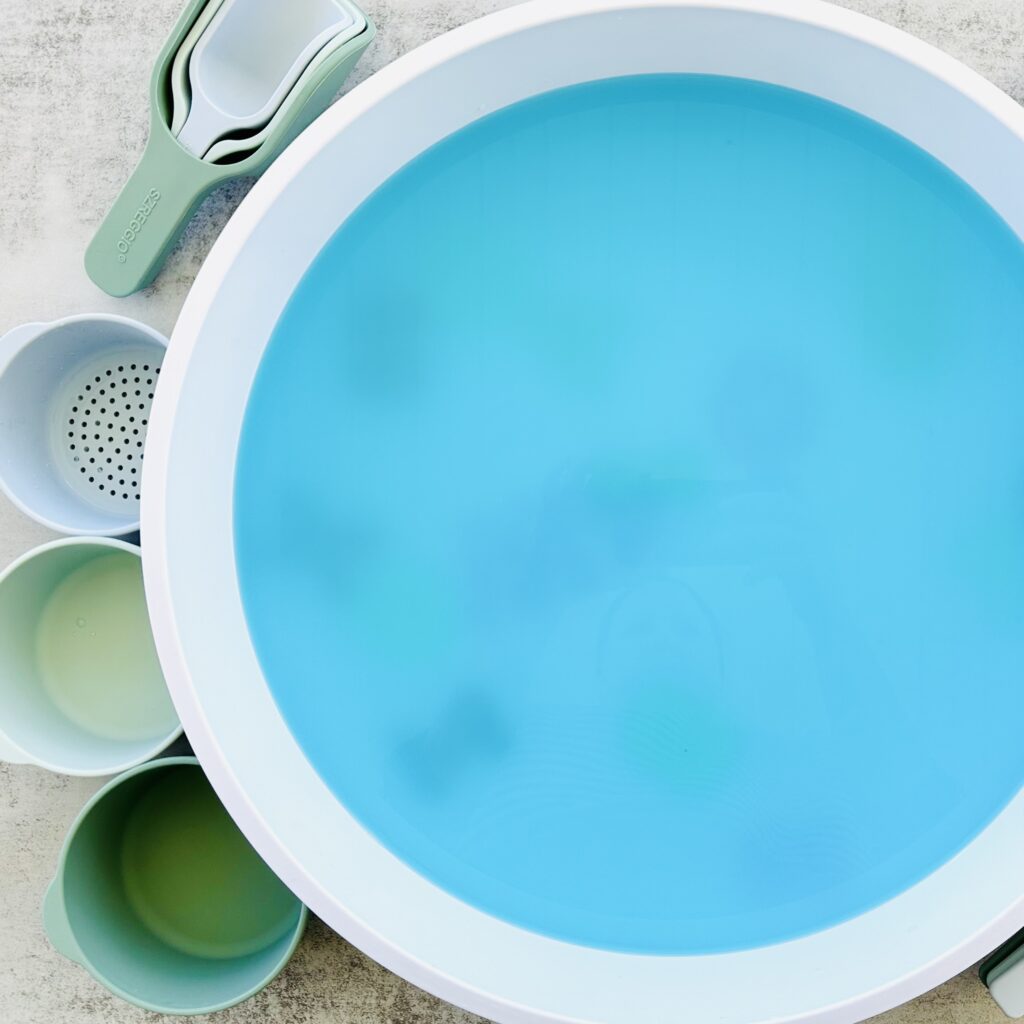
Always supervise children during sensory play. See full disclaimer here. This post may contain affiliate links, which means I may earn a small commission if you make a purchase through these links, at no extra cost to you. As an Amazon Associate, I earn from qualifying purchases. I only recommend products I personally use and love!You can read more about my disclosure policy here.
If you’ve ever watched your little ones light up during water play, you know just how magical it can be. But did you know you can take water play to the next level with a simple trick? By making mystery water, you’ll have an activity that feels like pure magic. Kids dip their hands into opaque water and discover hidden treasures they can’t see!
It’s surprisingly easy to make at home and a fun project your kids can help with. Plus, it costs just pennies to whip up and can be customized with colors and objects your children will love searching for.
Why Make Mystery Water?
Mystery water is regular water turned opaque with a little food coloring and cornstarch. The cloudy, colorful effect hides objects at the bottom of a bin, creating an exciting hands-on game for kids.
Perfect as a sensory bin filler, mystery water keeps kids engaged because it’s interactive and endlessly adaptable. It’s also a budget-friendly activity that can be set up in minutes!
One of the best parts? You know exactly what’s in it, just everyday, safe kitchen materials. That peace of mind makes it a great choice for families with toddlers, preschoolers, or kids who love messy, hands-on fun.
The Best Mystery Water Recipe
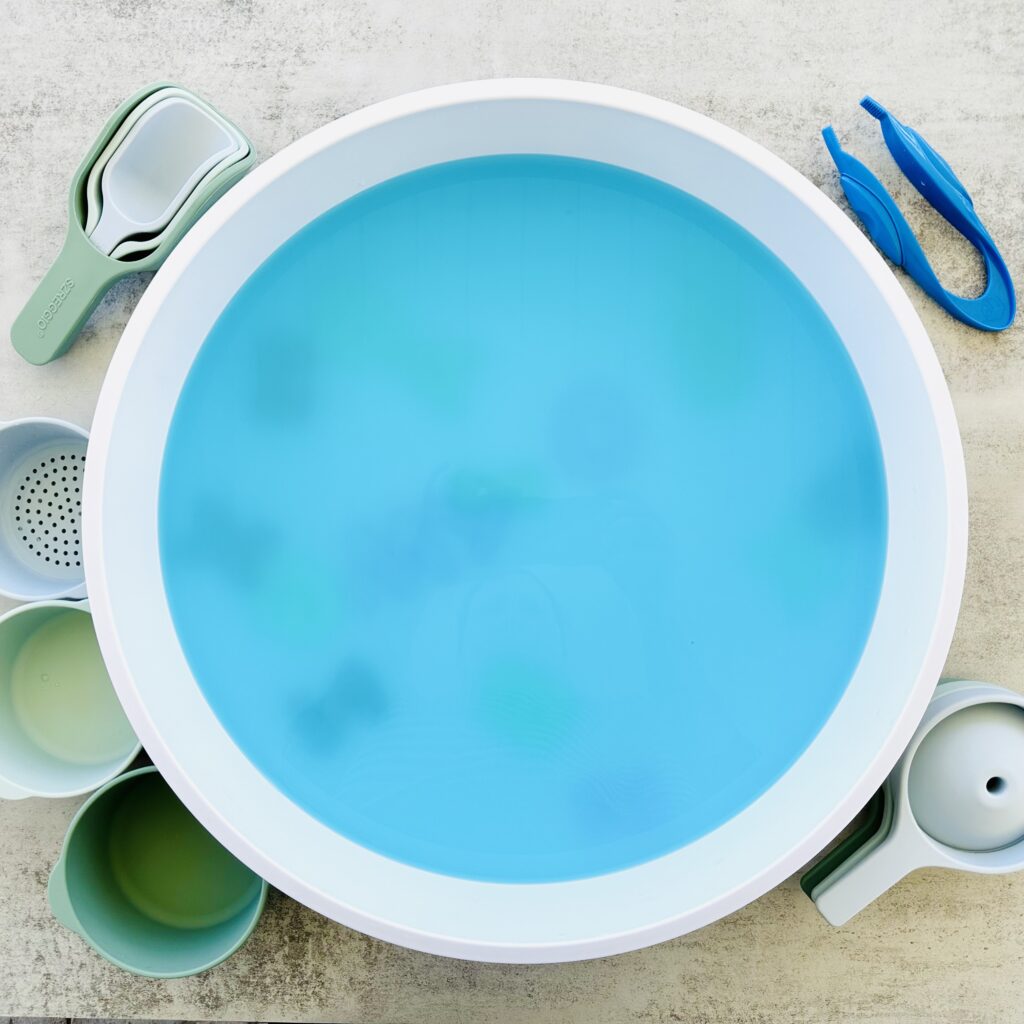
Ingredients
- 4 cups water
- ¼ cup cornstarch
- A few drops of food coloring (any color works!)
- Small treasures to hide (letters, numbers, small toy figurines, etc.)
- Tongs and Tweezers, Scoops, Funnels
- Silicone Cupcake Liners or Small Bowls
- Sensory Bin (or any container big enough for your child to play in)
Instructions
1. Add Water
Pour 4 cups of water into a sensory bin.
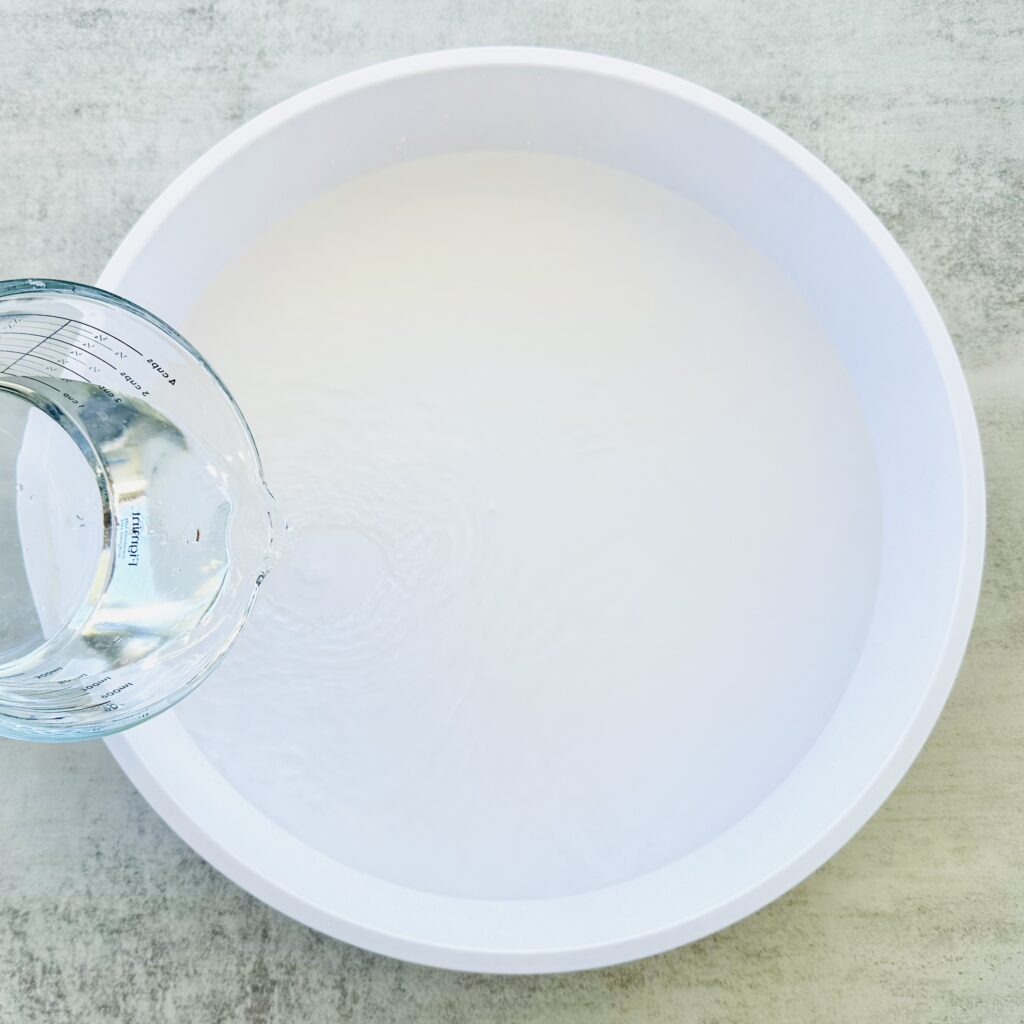
2. Add Food Coloring
Add several drops of food coloring and stir.

3. Mix In Cornstarch
Mix in about ¼ cup of cornstarch (or enough to make the water opaque) and stir until fully dissolved and the water becomes opaque.

4. Hide Treasures
Drop in your chosen objects. Make sure they sink to the bottom for the best effect.
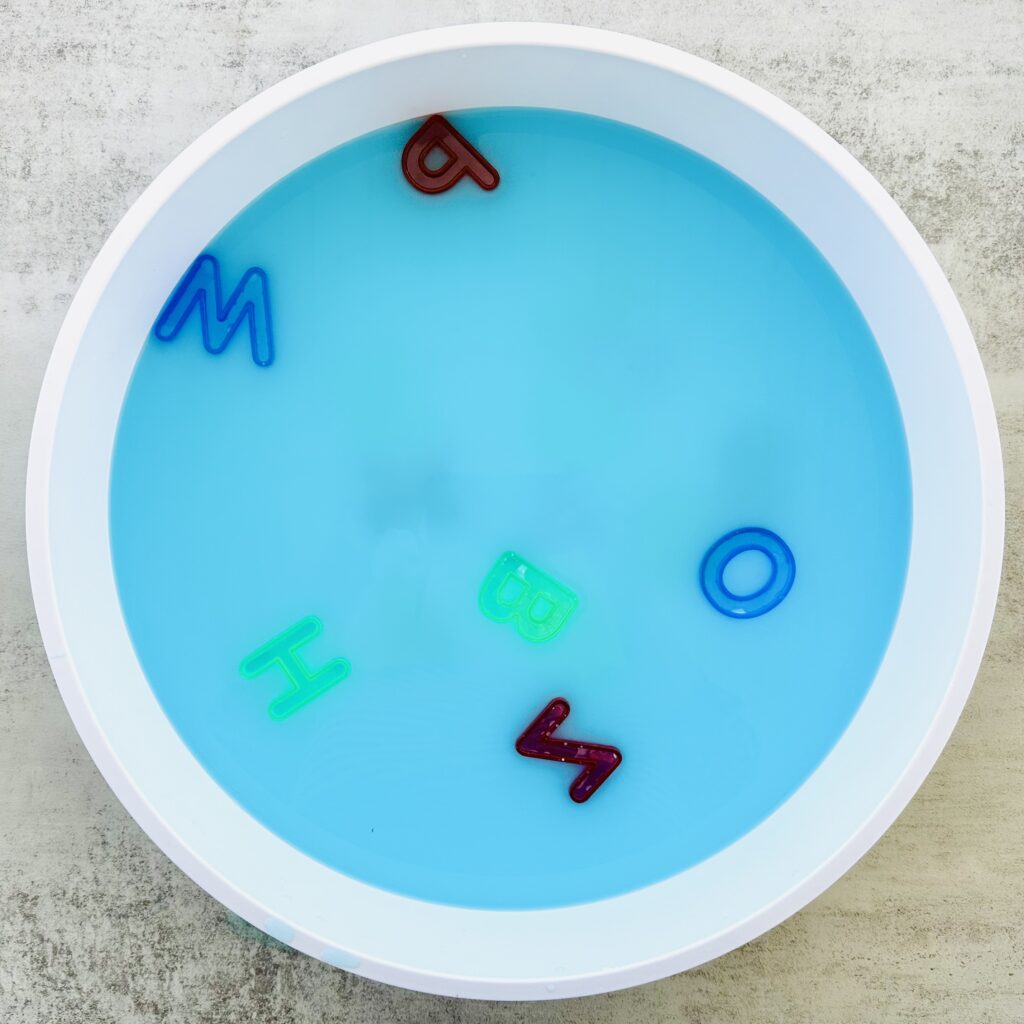
5. Play And Discover
Add tools like tweezers, bowls, scoops, and funnels. Invite your little ones to reach in, scoop, tweeze, and search for the hidden treasures!
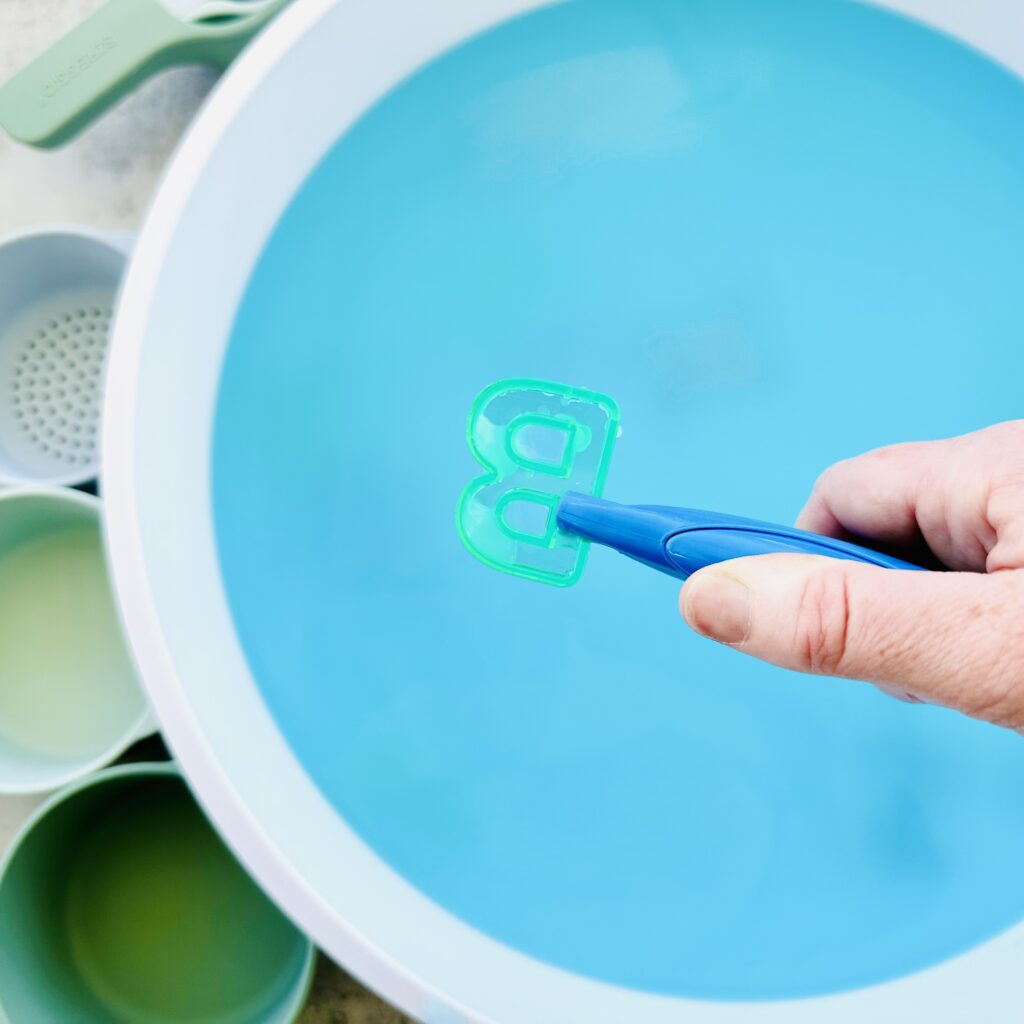
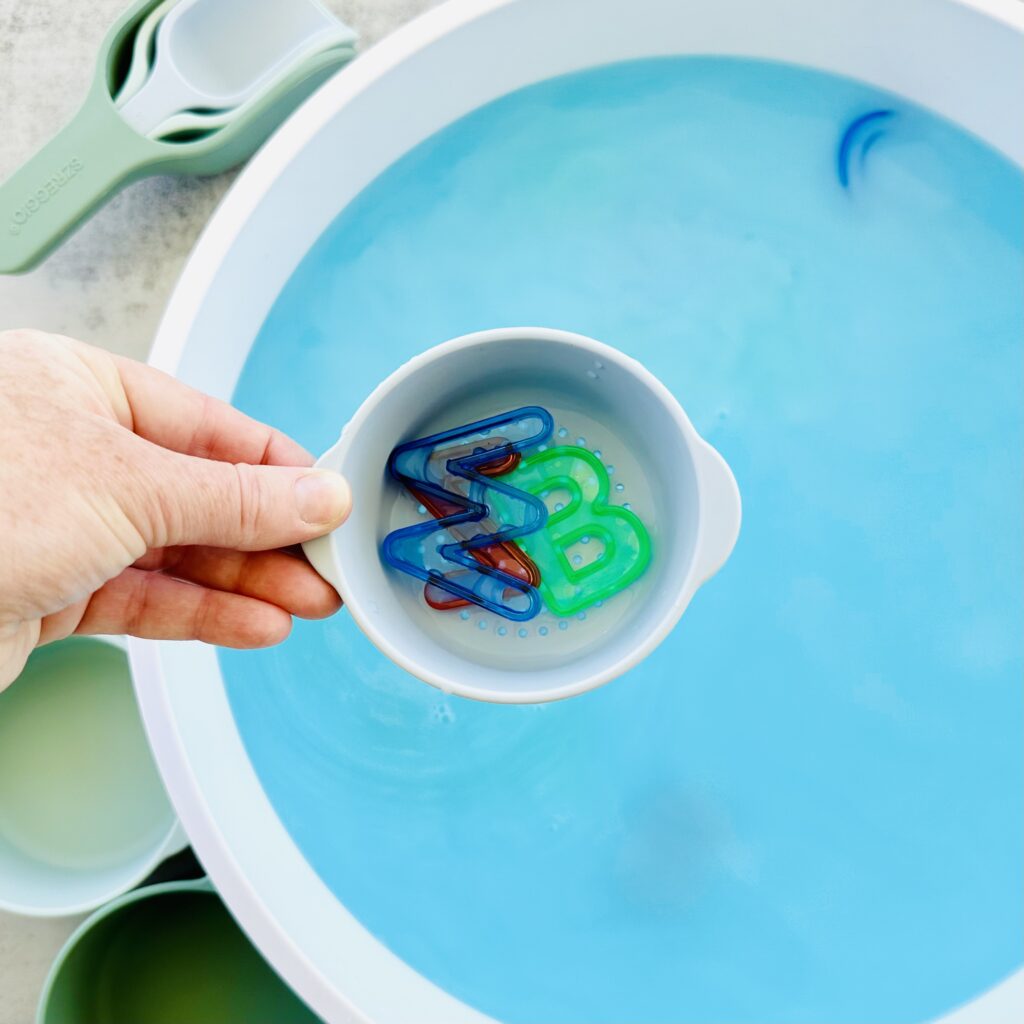
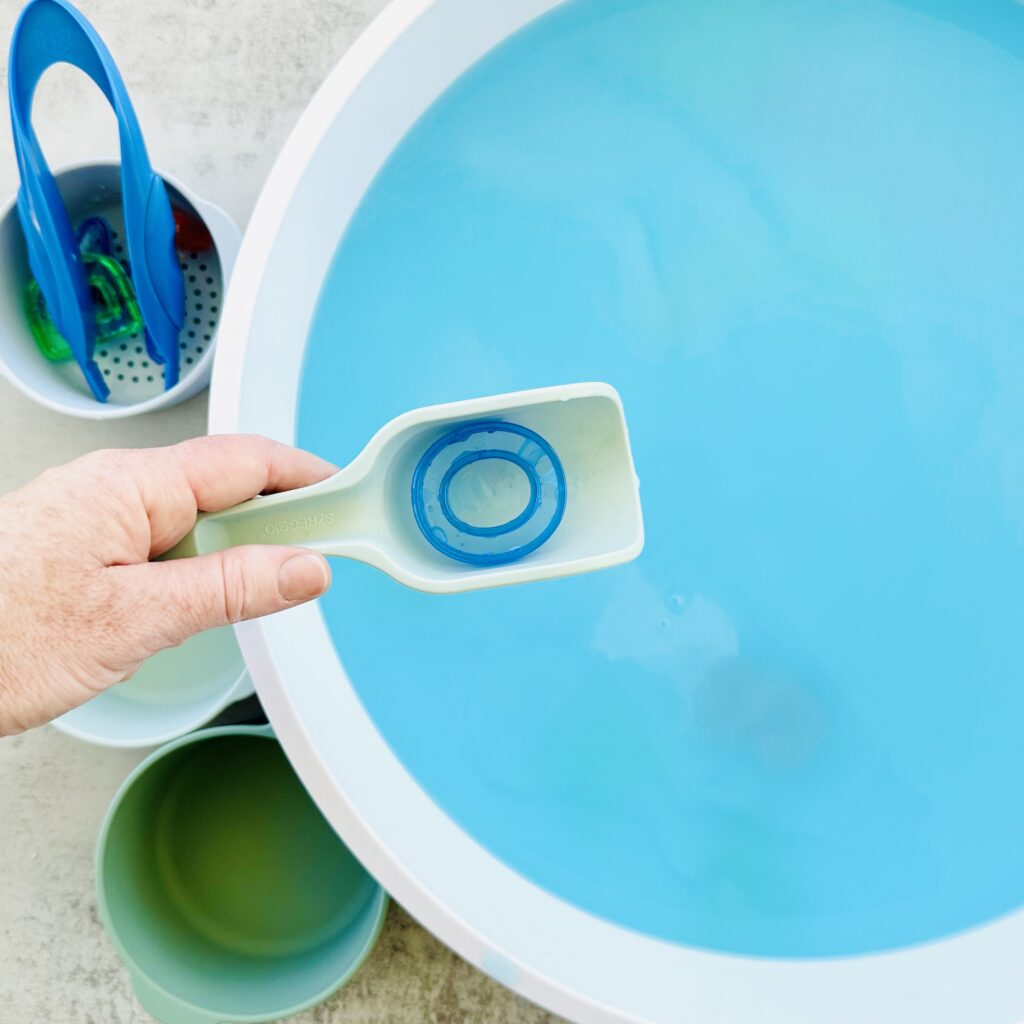
Tips for Making the Most of Your Mystery Water
Mystery Water Sensory Bin Ideas
Now that your mystery water is ready, it’s time to set up some fun sensory bins to make playtime even more exciting! Sensory bins are fantastic for sparking imaginative play. Here are some simple and creative ideas:
1. Alphabet Soup
Turn sensory play into a learning game by tossing in plastic letters. Have your child call out the letters they find, or encourage them to spell simple words once they’ve collected enough. This is a playful way to practice letter recognition, spelling, and early reading skills.
2. Mermaid Treasure Hunt
Bring the magic of the ocean to life! Hide seashells, shiny gems, pearls, or small mermaid figurines at the bottom of the bin. For extra fun, add toy fish or sea creatures and encourage your kids to imagine they’re exploring the deep sea.
3. Dinosaur Dig
If you’ve got a little paleontologist, this one’s a hit! Hide small plastic dinosaurs, rocks, and toy bones. Kids will love reaching into the mystery water to see what prehistoric surprise they’ll uncover next. Add a magnifying glass so they can “study” their finds like real scientists.
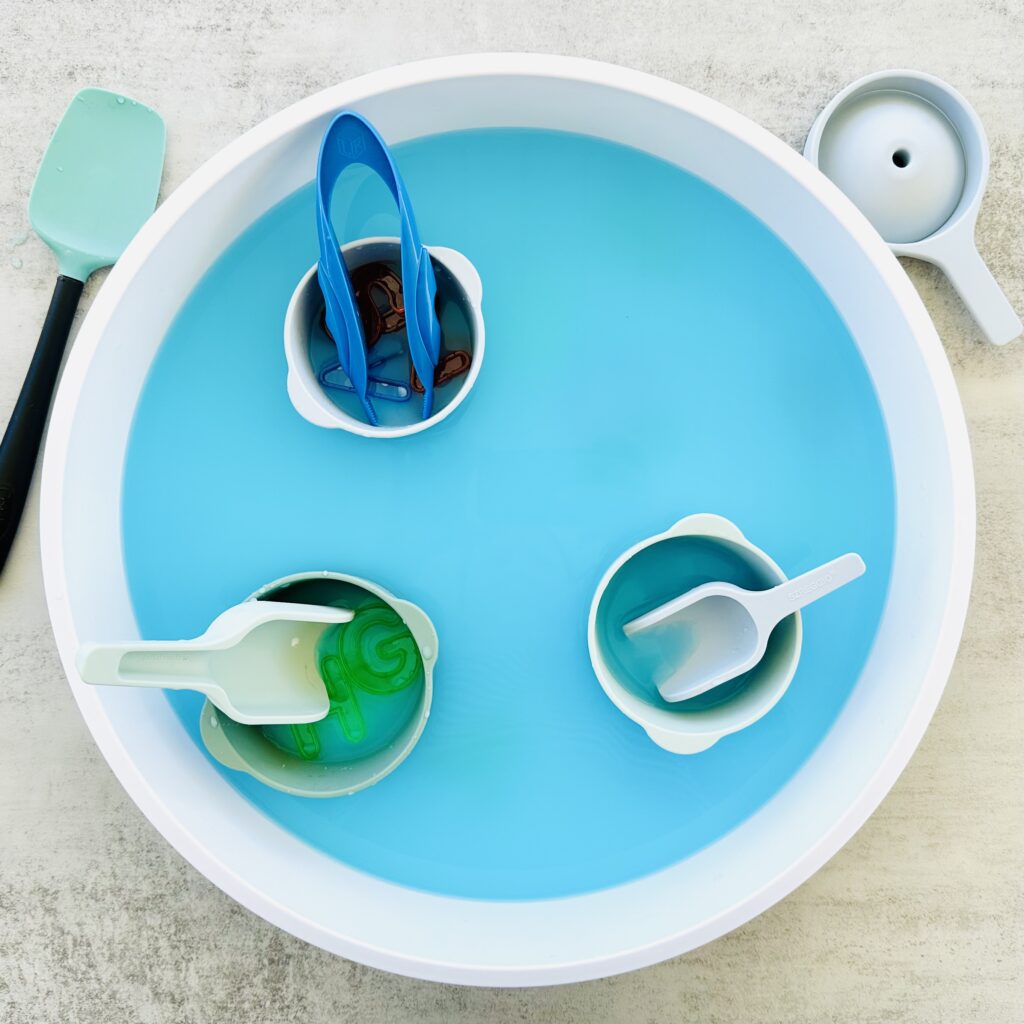
How to Dispose of Mytery Water
When the fun’s over, scoop out the treasures to save for next time, then pour the mystery water down the drain with hot water (or outside if you made a big batch). Any leftover sludge can go straight in the trash. Quick rinse, and your bin is ready for the next adventure!
Why Sensory Play Matters
Sensory play is an essential part of your child’s development. From the moment they’re born, babies use their senses to explore the world. By engaging their senses through touch, sight, smell, sound, and taste, they build crucial connections in the brain that help with learning and cognitive development.
Sensory play is especially important because it:
- Builds Nerve Connections: Playing with different textures and materials helps children create pathways in their brain, leading to better problem-solving and fine motor skills.
- Encourages Motor Skills Development: Scooping and pouring support both fine motor skills (those small muscle movements like pinching) and gross motor skills (bigger movements like scooping or pouring).
- Boosts Language Development: When children describe what they feel or create stories about their play, they strengthen their vocabulary and storytelling skills.
- Promotes Calm and Focus: For many children, especially those with sensory processing needs, sensory play can be calming and help them focus better.
You’ll Love This Mystery Water Recipe
Making mystery water at home is an easy, affordable way to turn everyday play into something magical. With just a few ingredients, you’ll have an activity that sparks imagination, surprises kids, and keeps them busy for hours.
So grab your bin, mix up some mystery water, and let the treasure hunt begin!
Recommended
- 18 Recipes: The Best DIY Sensory Bin Fillers
- How to Dye Chickpeas for Sensory Play
- How To Dye Rice To Make Rainbow Rice
- How To Dye Pasta Noodles For Sensory Play
- How to Make Jello Blocks for Sensory Play
- How to Make Taste-Safe Chia Seed Sensory “Slime”
- How To Make Edible Dirt For Sensory Play
- How To Make Edible “Mud” Playdough For Sensory Play
- How To Make The Best Taste-Safe Kinetic Sand
- How To Make Taste-Safe Moon Dough For Sensory Play
- How to Make Taste-Safe Chia Seed Sensory Mud Slime
- How To Create Awesome Colorful Bubble Foam
- How to Make The Best 2 Ingredient Cloud Dough
- How to Make The BEST 2 Ingredient Edible Play Dough
- Guide To Sensory Bin Supplies You Need To Have
